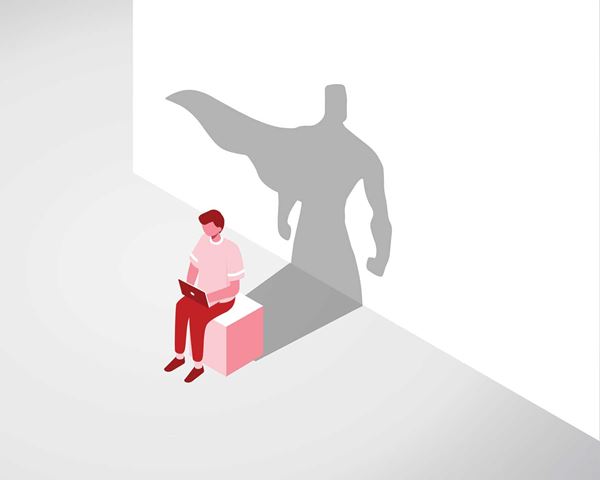What is Cardiovascular Disease?
Cardiovascular disease can refer to a number of conditions:
Heart disease
Heart and blood vessel disease, also called heart disease, includes numerous problems, many of which are related to atherosclerosis.
Atherosclerosis is a condition that develops when a substance called plaque builds up in the walls of the arteries. This buildup narrows the arteries, making it harder for blood to flow through. If a blood clot forms, it can block the blood flow. This can cause a heart attack or stroke.
Heart attack
A heart attack occurs when the blood flow to a part of the heart is blocked by a blood clot. If this clot cuts off the blood flow completely, the part of the heart muscle supplied by that artery begins to die.
Most people survive their first heart attack and return to their normal lives, enjoying many more productive years. But having a heart attack does mean that you need to make some changes.
The medications and lifestyle changes that your health care professional recommends may vary according to how badly your heart was damaged, and to what degree of heart disease caused the heart attack.
Learn more about heart attack.
Stroke
An ischemic stroke, which is the most common type of stroke, occurs when a blood vessel that feeds the brain gets blocked, usually from a blood clot.
When the blood supply to a part of the brain is cut off, some brain cells will begin to die. This can result in the loss of functions controlled by that part of the brain, such as walking or talking.
A hemorrhagic stroke occurs when a blood vessel within the brain bursts. This is most often caused by uncontrolled high blood pressure.
Some effects of stroke are permanent if too many brain cells die after being starved of oxygen. These cells are never replaced.
The good news is that sometimes brain cells don’t die during stroke — instead, the damage is temporary. Over time, as injured cells repair themselves, previously impaired function improves. In other cases, undamaged brain cells nearby may take over for the areas of the brain that were injured.
Either way, strength may return, speech may get better and memory may improve. This recovery process is what stroke rehabilitation is all about.
Learn more about stroke.
Heart failure
Heart failure, sometimes called congestive heart failure, means the heart isn’t pumping blood as well as it should. Heart failure does not mean that the heart stops beating — that’s a common misperception. Instead, the heart keeps working, but the body’s need for blood and oxygen isn’t being met.
Heart failure can get worse if left untreated. If your loved one has heart failure, it’s very important to follow their health care professional’s treatment plan.
Learn more about heart failure.
Arrhythmia
Arrhythmia refers to an abnormal heart rhythm. There are various types of arrhythmias. The heart can beat too slow, too fast or irregularly.
Bradycardia, or a heart rate that’s too slow, is when the heart rate is less than 60 beats per minute. Tachycardia, or a heart rate that’s too fast, refers to a heart rate of more than 100 beats per minute.
An arrhythmia can affect how well your heart works. With an irregular heartbeat, your heart may not be able to pump enough blood to meet your body’s needs.
Learn more about arrhythmia.
Heart valve problems
When heart valves don’t open enough to allow the blood to flow through as it should, a condition called stenosis results. When the heart valves don’t close properly and thus allow blood to leak through, it’s called regurgitation. If the valve leaflets bulge or prolapse back into the upper chamber, it’s a condition called prolapse. Discover more about the roles your heart valves play in healthy circulation.
Learn more about heart valve disease.
Common treatments
Here are some common treatments for different types of cardiovascular disease:
Heart valve problems
Arrhythmia
Heart attack
- Medications
- Coronary angioplasty
- Coronary artery bypass graft surgery
- Heart transplant or other heart surgery
- Radiofrequency ablation
- Stent procedure
- Transmyocardial revascularization
- Lifestyle changes
Stroke
- Medications
- Carotid endarterectomy (PDF)(link opens in new window)
- Thrombectomy
- Aneurysm clipping
- Coil embolization
- Blood transfusion
- Lifestyle changes
Diagnostic tests, surgical procedures and medications
In the hospital and during the first few weeks at home, your health care professional may perform several tests and procedures. These tests help them determine what caused the stroke or heart attack, and how much damage was done. Some tests monitor your progress to see if the treatment is working.
Learn more about diagnostic tests and procedures.
Learn more about surgical procedures that may have been performed at the hospital.
Cardiac medications
The medications prescribed after a cardiovascular event can aid in recovery and help prevent another heart attack or stroke.
If you’re a caregiver, make sure your loved one takes their medications as directed and on time. Learn about the medications that your loved takes. Know what those medicines do, and what their goal is.
It’s important to follow your health care professional’s directions closely, so ask questions and take notes.
It’s important to follow your doctor’s directions closely, so ask questions and take notes. Learn more about cardiac medications.






